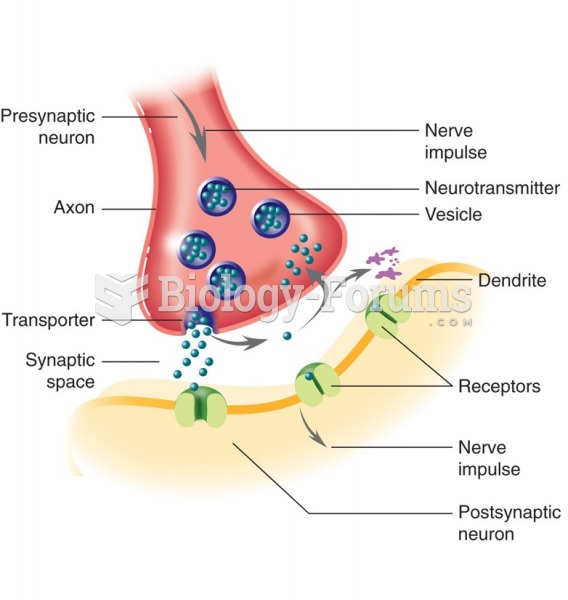Answer to Question 1
Duration of activity: Early in an activity, as the muscles draw on fatty acids, blood levels fall. If the activity continues for more than a few minutes, the hormone epinephrine signals the fat cells to begin breaking down their stored triglycerides and liberating fatty acids into the blood. As physical activity continues, the blood fatty acid concentration surpasses the normal resting concentration. Thereafter, sustained, moderate activity uses body fat stores as its major fuel.
Intensity of activity: The intensity of physical activity also affects fat use. As the intensity of activity increases, fat makes less and less of a contribution to the fuel mixture. Remember that fat can be broken down for energy only by aerobic metabolism. For fat to fuel activity, then, oxygen must be abundantly available. If a person is breathing easily during activity, the muscles are getting all the oxygen they need and are able to use more fat in the fuel mixture.
Training: Trainingrepeated aerobic activityproduces the adaptations that permit the body to draw more heavily on fat for fuel. Training stimulates the muscle cells to manufacture more and larger mitochondria, the powerhouse structures of the cells that produce ATP for energy. Another adaptation: the heart and lungs become stronger and better able to deliver oxygen to muscles at high activity intensities. Still another: hormones in the body of a trained person slow glucose release from the liver and speed up the use of fat instead. These adaptations reward not only trained athletes but all active people; a person who trains in aerobic activities such as distance running or cycling becomes well suited to the activity.
Answer to Question 2
After the first 10 seconds or so of intense activity, energy from the phosphagen system diminishes, so muscle cells call upon the lactic acid system to produce more ATP. The lactic acid system involves the anaerobic breakdown of glucose to pyruvate (and then of pyruvate to lactate). The primary source of glucose is muscle glycogen. This system can generate a small amount of ATP quickly for high-intensity activity lasting up to 3 minutes.
When the rate of glycolysis exceeds the capacity of the mitochondria to accept hydrogens with their electrons for the electron transport chain, the accumulating pyruvate molecules are converted to lactate. Lactate is the product of anaerobic glycolysis. At low intensities, lactate is readily cleared from the blood, but at higher intensities, lactate accumulates. When the rate of lactate production exceeds the rate of clearance, intense activity can be maintained for only 1 to 3 minutes (as in a 400- to 800-meter race or a boxing match). Lactate has long been blamed for muscle fatigue, but research disputes this idea. Working muscles may produce lactate and experience fatigue, but the lactate does not cause the fatigue.
Lactate quickly leaves the muscles and travels in the blood to the liver. There, liver enzymes convert the lactate back into glucose. Glucose can then return to the muscles to fuel additional activity. The recycling process that regenerates glucose from lactate is known as the Cori cycle.







